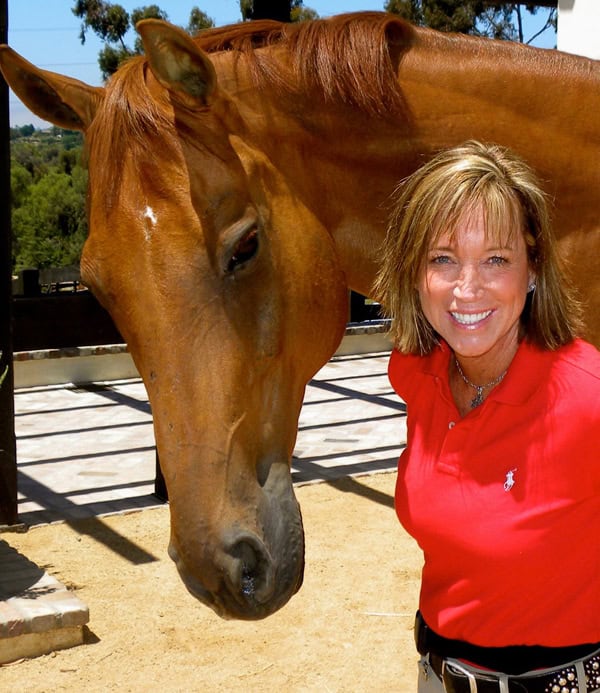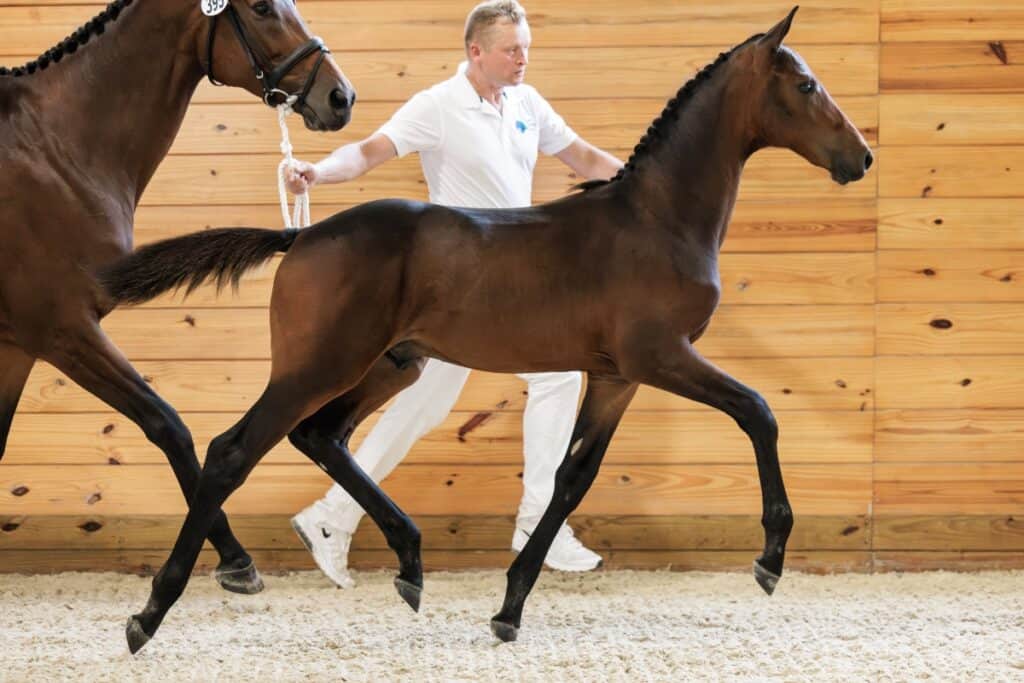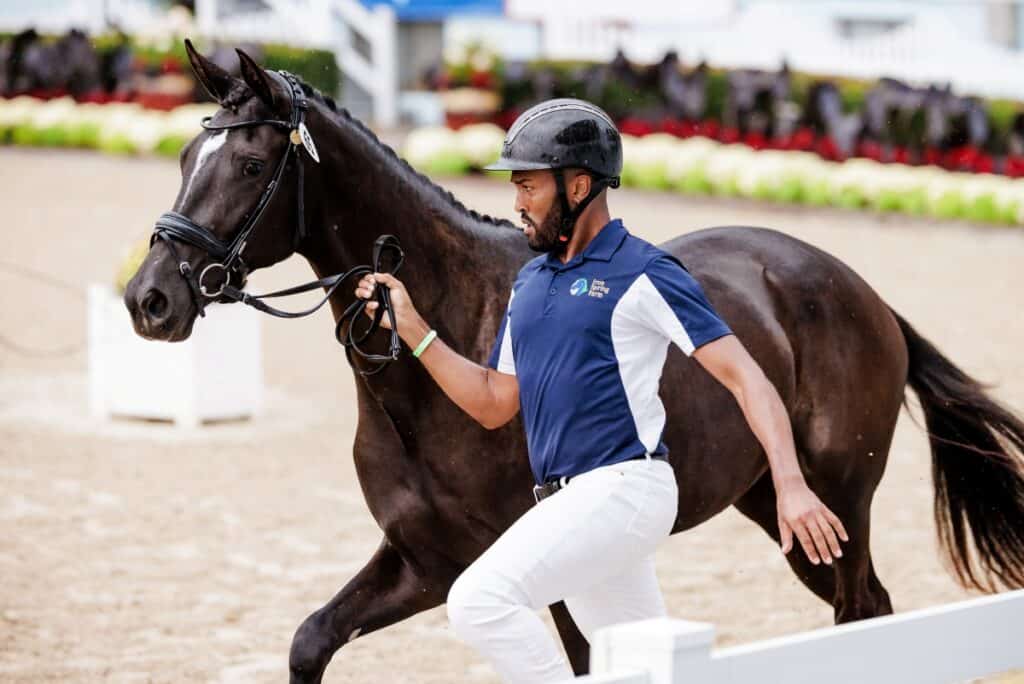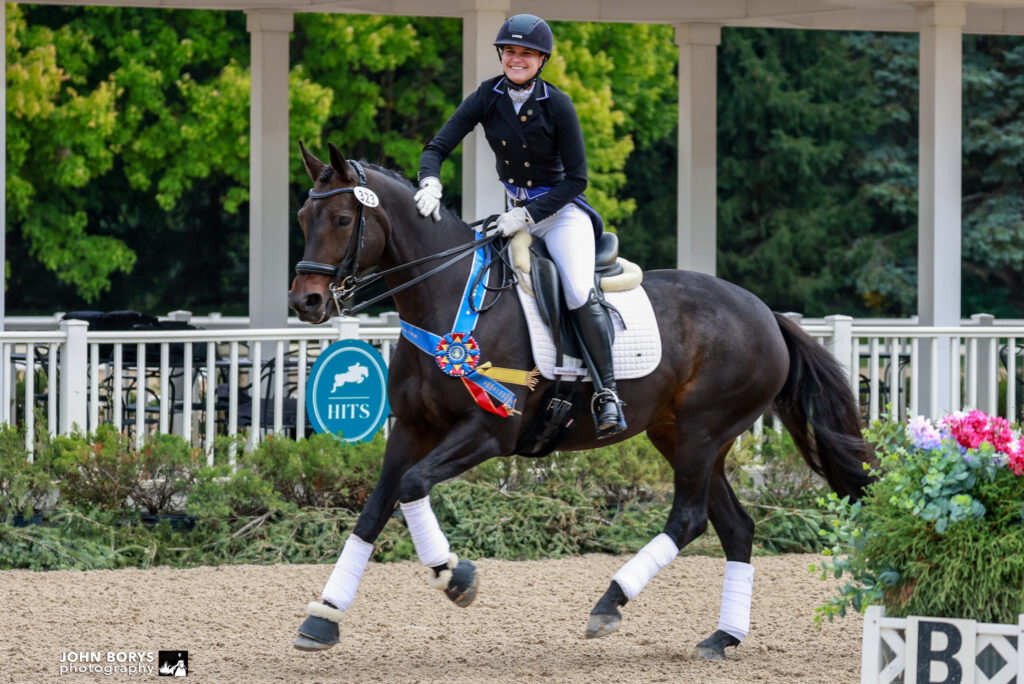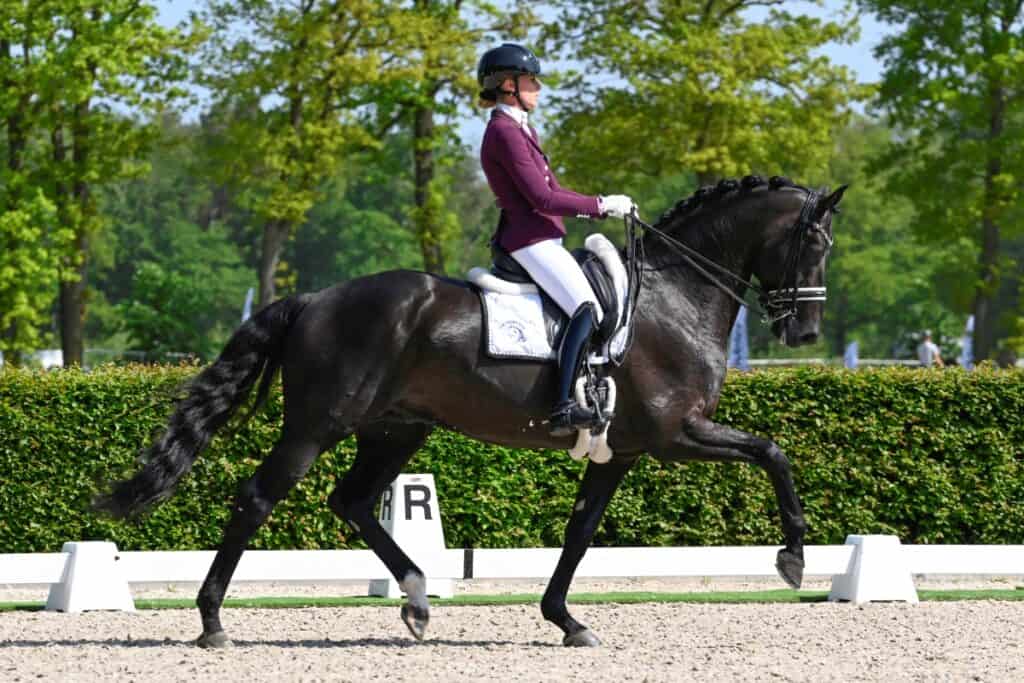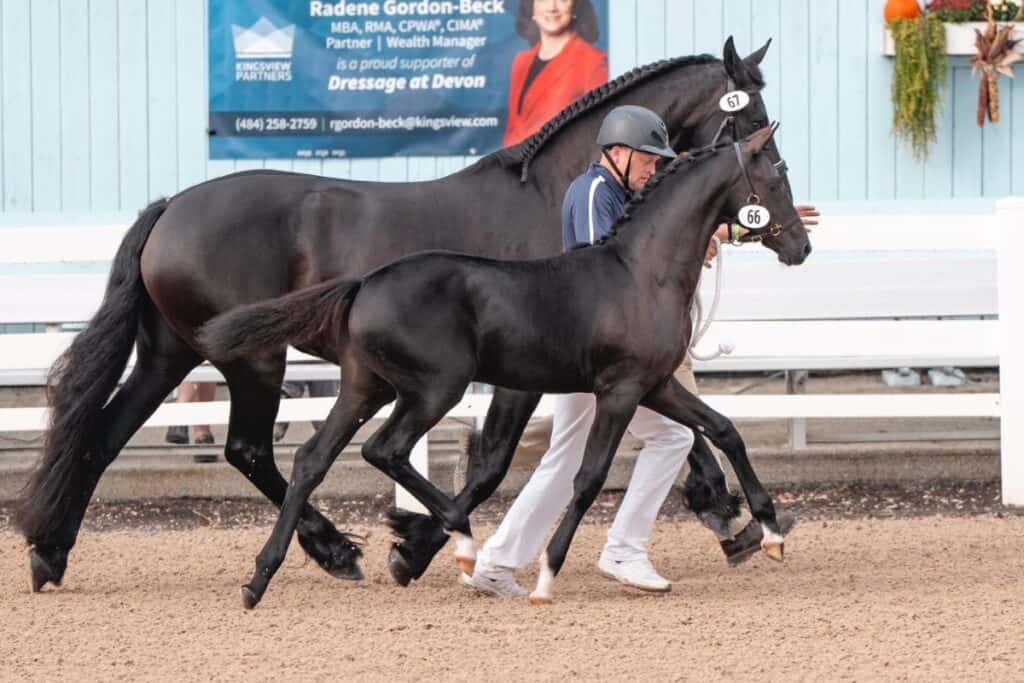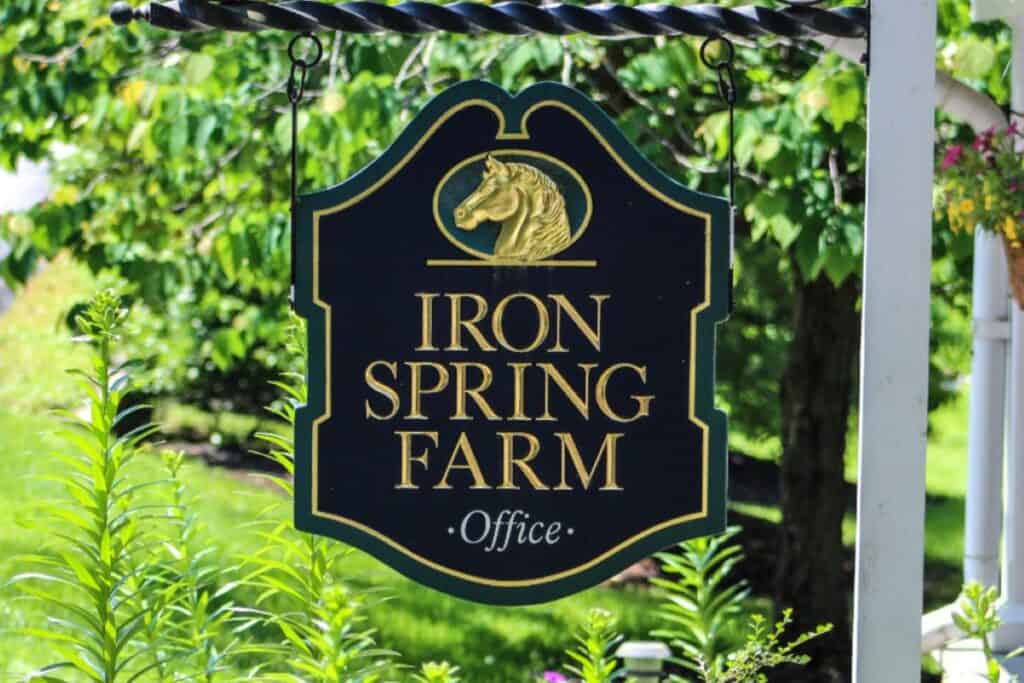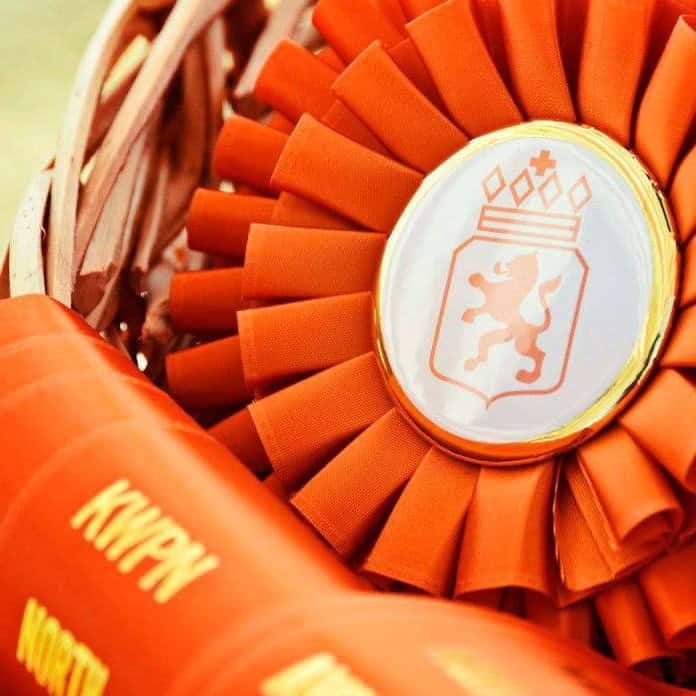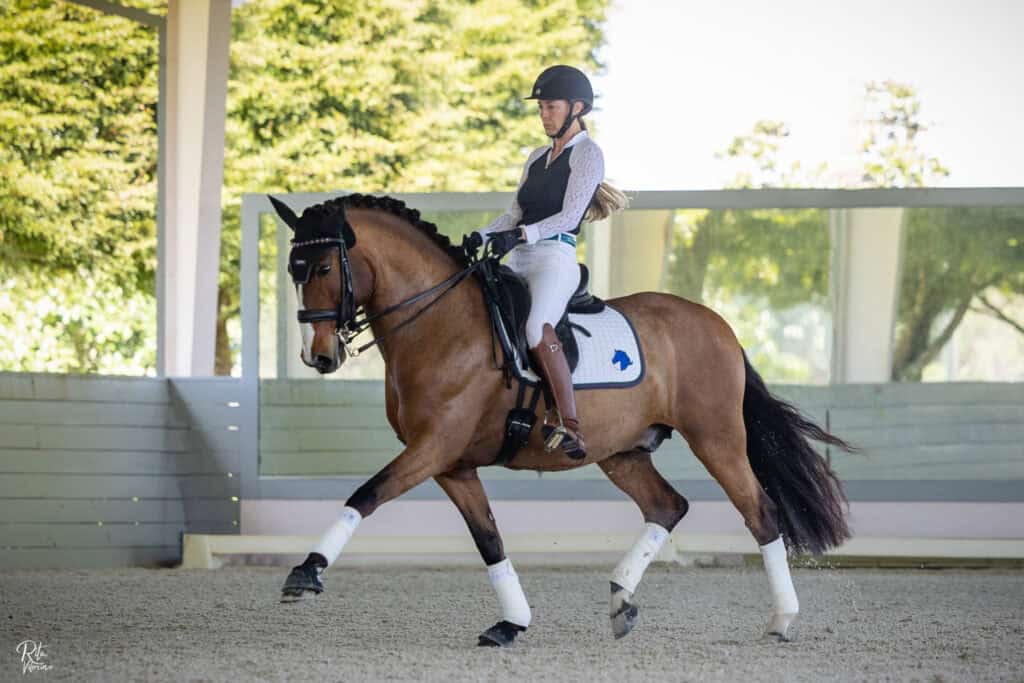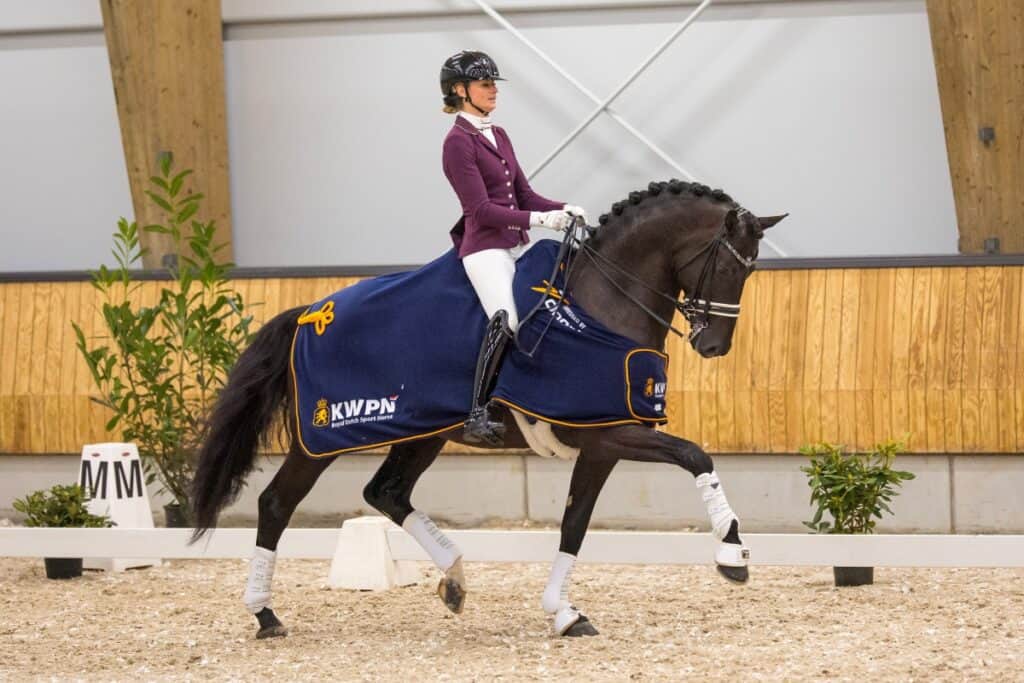An Introduction to Positive Reinforcement Training with Shawna Karrasch
Many of you may know that part of Judgement’s success springs from the positive reinforcement training, i.e. clicker training, that he did with Beezie and John Madden and Shawna Karrasch. Before earning more than $1.5 million in prize money and representing the USA on 10 Nation’s Cup teams, Judgement was afraid to jump the water.
After positive reinforcement training, Judgement’s aversion to water was permanently eased. Shawna’s professional career began at Sea World in California where she spent 10 years working with orcas, dolphins and other marine mammals.
How did you begin working with horses?
Shawna Karrasch: I wasn’t originally a horse person, but my grandfather had quarter horses. These horses weren’t necessarily happy to see the humans, but they submitted to whatever we wanted. In 1992 Elizabeth Busch Burke gave me tickets to see a Grand Prix. I saw some horses that were happy and some that weren’t, and that’s when I became interested in these wonderful animals.
I initially tried to talk to the hunter/jumper trainers and I kept hearing no, no, no. Since I was getting so many no’s I decided that I better learn about horses and began to take lessons. This eventually led to meeting John Madden, whose wife Beezie had a horse that was afraid of the stick. I showed John the basics of positive reinforcement training and he went home and worked with this horse. He called and told me, I not only got the horse to touch the stick, now I can’t get him to stop!
At that point I headed east and spent a year with the Maddens, which I call my equine lab time. The business expanded from Olympic riders to backyard owners that want to make their time with their horses as fun and safe as possible.
How is positive reinforcement training different from traditional training?
SK: Traditional training uses the concept of pressure and release. The release is the removal of pressure. That’s the reward. We squeeze our leg and when our horse goes forward we remove the pressure. Everything is about pressure and release, from the halter and leadrope in leading to a shoulder-in. Traditional training is actually negative reinforcement training because something is taken out of the equation.
With positive reinforcement, something is added, such as a click or a click and a treat.
At Sea World we never used negative reinforcement for anything, ever, for safety reasons. Negative reinforcement can lead to frustration, which can lead to aggression. We needed the marine mammals to love their jobs and their people. These animals are excited about learning and the process is very stimulating for them.
What is positive reinforcement training and how does it benefit horses?
SK: Basically we reward the horse for performing the behavior we want. We use a clicker to pinpoint a moment in time so that the horse understands the behavior we want from them. The clicker is the bridge signal and reinforces the behavior that we want. For example, we can click at the moment the horse does a lead change.
This process changes their demeanor and the way they feel about their jobs.
Their attitude starts to get better about everything. They get happier. Everything seems a little easier for them. It can make a big difference; even horses that are really good can improve their performance.
Is clicker training hard to learn?
SK: You begin simply by spending 5-10 minutes working with your horse in their stall or paddock. Check out my website for tips on how to get started.
What common behaviors are benefitted by clicker training?
SK: Any and all interactions with your horse can be improved with clicker training because your horse will be thinking of ways to do what you want. Among the common issues people want to address are trailering, despooking, sheath cleaning, being afraid of the hose and much more.
How can positive reinforcement training improve dressage performance?
SK: One of the ways that most people don’t expect to see improvement is in the horse’s relaxation, which then allows for a brilliant performance. A rider gets all of the expression, but without the tension.
Dressage is a lot of little baby steps. You can pinpoint the exact moment of the horse’s success and you get precise communication.
You can teach the horse correct contact, the stretchy circle, how to avoid anticipating the changes or the half-pass. Your horse will get excited about this because there’s something in it for them. They raise their own standards because there’s something they want. It’s a game changer.
Disclaimer:
All content provided by Iron Spring Farm is general and for informational purposes only. Content may also not constitute the most up to date information. Nothing in this content is intended to constitute veterinarian advice or to serve as a substitute for consultation with a veterinarian. Always seek the advice of your veterinarian or other qualified provider with any questions that you may have about the treatment and care of your horse.
Any reliance that you place on the information provided is strictly at your own risk and Iron Spring Farm, its officers, employees, representatives, and agents, hereby disclaim any and all liability to any party for any direct, indirect, implied, punitive, special, incidental, consequential or other damages arising directly or indirectly from access to or use of any content provided to the maximum extent permitted by law.
